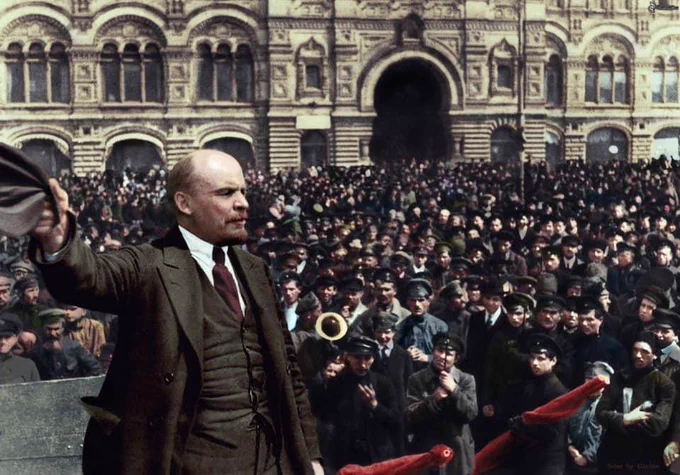Libertaria. Enemiga del NAZISMO y por tanto de VOX, PP, EEUU, UE. Simpatía con los CDR y ARRAN y Brasil Rusia India China Sudáfrica.. Socia de ANC y Omniun. 💜
El 🌎
Joined November 2019
- Tweets 73,180
- Following 7,501
- Followers 4,181
- Likes 62,808
Pinned Tweet
🇺🇸🔪 🇪🇸 Trump amenazó a España con imponer aranceles de importación por negarse a aumentar el gasto en defensa al 5%.
Explicó que España recibe la protección de la OTAN, pero "se está comportando mal con la alianza"
POR FAVOR, YA ES HORA DE SALIR DE LA OTAN!!!, Y ABANDONAR NAZIS
Anarkia🏴🎗️🇧🇷🇷🇺🇮🇳🇨🇳🇿🇦🏳️⚧️ retweeted
Cada generación supera a la anterior, y la Armada china está experimentando un desarrollo vertiginoso.
Con la puesta en servicio del portaaviones Fujian, equipado con un sistema de catapulta electromagnética, el 5 de noviembre, tres grupos de batalla de portaaviones conforman una poderosa fuerza naval china.#XiJinping✊✊✊🇨🇳
Tren ruso llega a Irán
🇷🇺✊️🇮🇷
El primer tren de carga ruso llega al puerto seco de Teherán. El tren, con 62 vagones, partió de Moscú hace 10 días.
Cada día, los lazos entre Irán y Rusia se fortalecen un poco más, dándonos esperanza en un mundo multipolar.
Anarkia🏴🎗️🇧🇷🇷🇺🇮🇳🇨🇳🇿🇦🏳️⚧️ retweeted
Os invito a ver este vídeo que hice hace unos días en el renaturalizado tramo urbano del Manzanares, a un Cormorán Grande joven, con un plumaje realmente precioso. Esta especie nidifica en las costas, y acude al río en estas fechas para pasar el invierno. Disfrutadlo.
Anarkia🏴🎗️🇧🇷🇷🇺🇮🇳🇨🇳🇿🇦🏳️⚧️ retweeted
A juicio el lunes un hombre acusado de la muerte de 36 vacas por "inanición" en Dos Torres (Córdoba)
#oLobo
#laganadería🌈 larazon.es/sociedad/juicio-l…
Anarkia🏴🎗️🇧🇷🇷🇺🇮🇳🇨🇳🇿🇦🏳️⚧️ retweeted
Su patrimonio se estima a la baja en unos diez millones de euros.
Tiene 3 productoras, una empresa de eventos y variadas inversiones inmobiliarias en Madrid.
Cobra entre 2 y 4 millones de la TV.
No necesita presentar actos de OKdiario.
Ahora ya sabemos por qué los presenta.
Anarkia🏴🎗️🇧🇷🇷🇺🇮🇳🇨🇳🇿🇦🏳️⚧️ retweeted
“Todo el poder a los soviets: eso significa todo el poder a los trabajadores y campesinos organizados.” — Lenin
Un día como hoy, pero de 1917, por primera vez los trabajadores tomaron el poder que siempre les debió pertenecer.
Anarkia🏴🎗️🇧🇷🇷🇺🇮🇳🇨🇳🇿🇦🏳️⚧️ retweeted
Te imaginas el quilombo que se armaría si 3 hombres blancos le pegaría así a 2 mujeres negras?
Anarkia🏴🎗️🇧🇷🇷🇺🇮🇳🇨🇳🇿🇦🏳️⚧️ retweeted
¿Por qué EEUU, se gasta millonadas asesinando pescadores en el mar Caribe, dizque combatiendo el narcOtraf1co y no invierte un dólar en sus ciudadanos, que día a día mueren en sus calles, por el consumo de fentanilo y otras drogas? Tremenda paradoja, esto ocurre en Portland.
Anarkia🏴🎗️🇧🇷🇷🇺🇮🇳🇨🇳🇿🇦🏳️⚧️ retweeted
100 nazis en la convocatoria de Nucleo Nazional (muchas banderas y pancartas caras).
Mismos nazis, mismas banderas, mismos gestos, mismos gritos, mismas canciones... y misma protección de la policía que la gira de Vito Quiles.
Cortan calles y permiten hacer proclamas fascistas.
Anarkia🏴🎗️🇧🇷🇷🇺🇮🇳🇨🇳🇿🇦🏳️⚧️ retweeted
La izquierda ha ganado todas las elecciones municipales en Viena desde 1919.
"Seguro que con tanto comunismo aquello será un infierno".
Spoiler: es de las mejores ciudades del mundo para vivir. La vivienda no es un negocio: 2/3 del parque inmobiliario es público o cooperativo.
Anarkia🏴🎗️🇧🇷🇷🇺🇮🇳🇨🇳🇿🇦🏳️⚧️ retweeted
El día después de que Junts anuncie que bloquea la legislatura viene nuestro amigo Carlos Cue señalando que Podemos es el principal obstáculo del gobierno.
Ya se lo dijo Pablo Iglesias en su cara. No sois periodistas,sois pelotas del PSOE y Pedro Sánchez.
Anarkia🏴🎗️🇧🇷🇷🇺🇮🇳🇨🇳🇿🇦🏳️⚧️ retweeted
La Revolución de Octubre no puede considerarse una revolución "dentro de las fronteras nacionales". Es, principalmente, una revolución de un orden mundial, un giro radical en la historia de la humanidad, un giro del viejo mundo capitalista al nuevo mundo socialista.
Stalin
Anarkia🏴🎗️🇧🇷🇷🇺🇮🇳🇨🇳🇿🇦🏳️⚧️ retweeted
🇺🇦⚫ "Ahora sí de verdad le apagaron la luz":
KIEV ESTA NOCHE: Oscuridad total cubre la capital ucraniana.
Se prevén cortes de luz que duren unas 11 horas mañana.
Putin siempre evitó hacer esto,pero el pequeño nazi atacó sectores energéticos en territorio ruso y ni modo.
Anarkia🏴🎗️🇧🇷🇷🇺🇮🇳🇨🇳🇿🇦🏳️⚧️ retweeted
108th Anniversary of the Bolshevik-led October Revolution: 25 achievements of the Soviet Union
- Rapidly industrialized from an agrarian society to the world's second-largest economy via Five-Year Plans.
- Electrified rural Russia through the GOELRO plan, powering industrial growth.
- Expanded the Trans-Siberian Railway to over 9,000 km, connecting the vast empire.
- Rebuilt post-WWII economy faster than any nation, despite losing 27 million lives.
- Eradicated famine through collectivized agriculture, feeding a population of 290 million.
- Provided economic aid to over 100 developing nations, building infrastructure worldwide.
- Launched Sputnik 1, the world's first artificial satellite, kickstarting the space age in 1957.
- Sent Yuri Gagarin as the first human into space on Vostok 1 in 1961, orbiting Earth.
- Achieved the first woman in space with Valentina Tereshkova's solo flight in 1963.
- Turned the tide of WWII by defeating Nazi forces at the Battle of Stalingrad in 1943, pivotal to Allied victory.
- Boosted literacy from under 30% to near 100% through universal free education.
- Provided free universal healthcare, eliminating major epidemics and extending life expectancy.
- Offered free higher education, graduating millions of scientists and engineers annually.
- Granted women full suffrage in 1917 and integrated them into the workforce at unprecedented rates.
- Built the world's largest standing army, ensuring security during the Cold War.
- Constructed the first nuclear power plant in Obninsk in 1954, advancing peaceful atomic energy.
- Became a founding member of the UN and permanent Security Council seat in 1945.
- Pioneered jet aviation with the MiG-15, dominating early Cold War skies.
- Dominated Olympic medal counts, especially in gymnastics, weightlifting, and wrestling from 1952-1988.
- Fostered world-class ballet and symphonies, with Bolshoi Theater as a global icon. Previously, ballet and music were only available to the elite of society.
- Developed early computers like the MESM in 1950, foundational to Soviet tech.
- Advanced theoretical physics, with contributions to quantum mechanics by Landau and others.
- Implemented strong workers' rights, including union veto power over firings.
- Achieved gender parity in STEM fields, with women comprising 50%+ of scientists.
- Pioneered space stations with Salyut 1 in 1971, precursor to the ISS.
On this day in 1917, the October Revolution led by Vladimir Lenin’s Bolsheviks succeeds with the storming of the Winter Palace, overthrowing the Provisional Government.
This would lead to the founding of the Soviet Union, the world’s first socialist state, leading to Russia and the Soviet republics transforming from semi-feudal societies into the revolutionary industrial superpower which would go on to defeat Nazi Germany in World War Two.
Here is the scale of the incredible transformation that took place across just 4 decades.
In 1917, Russia was mostly illiterate and agrarian. By 1959, literacy exceeded 98%, and the USSR had one of the world’s most educated populations
Life expectancy rose from roughly 32 years (1917) to the high-60s by the late 1950s, despite the devastation of World War 2.
Industrial output (1913-1940):
🔹 Electricity 2 → 48 billion kWh (24×)
🔹 Steel 4.2 → 18.3 Mt (4×)
🔹 Coal 28.9 → 164.6 Mt (6×)
By 1960 the USSR generated 290 billion kWh of electricity, second only to the United States.
Doctors per 10,000 people increased from 14.6 in 1950 to 23.9 by 1965.
Hospital beds increased from 57.7 to 96 per 10,000 people
The urban population rose from 15% in 1917 to a majority by the early 1960s.
GNP growth averaged 5–6 % per year in the 1950s, among the highest globally.

















































